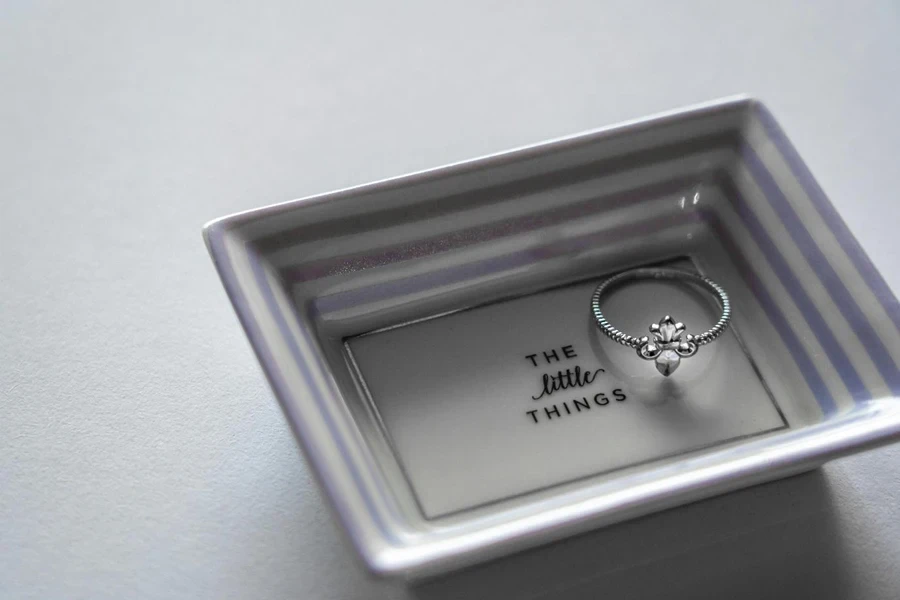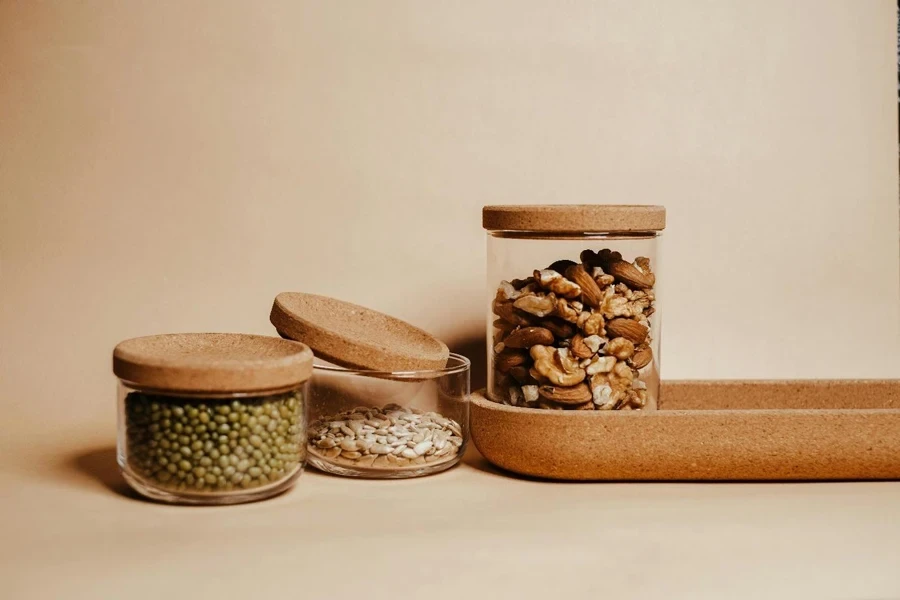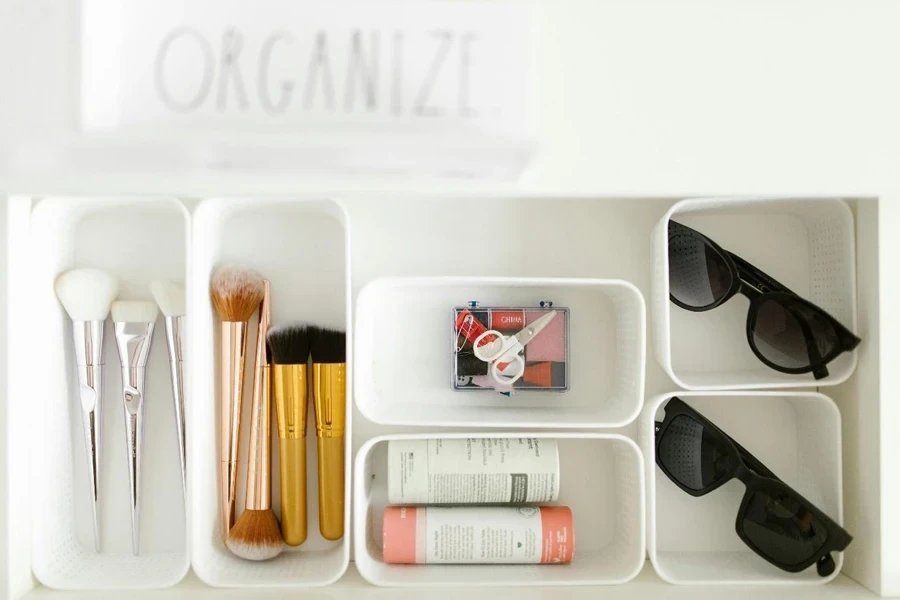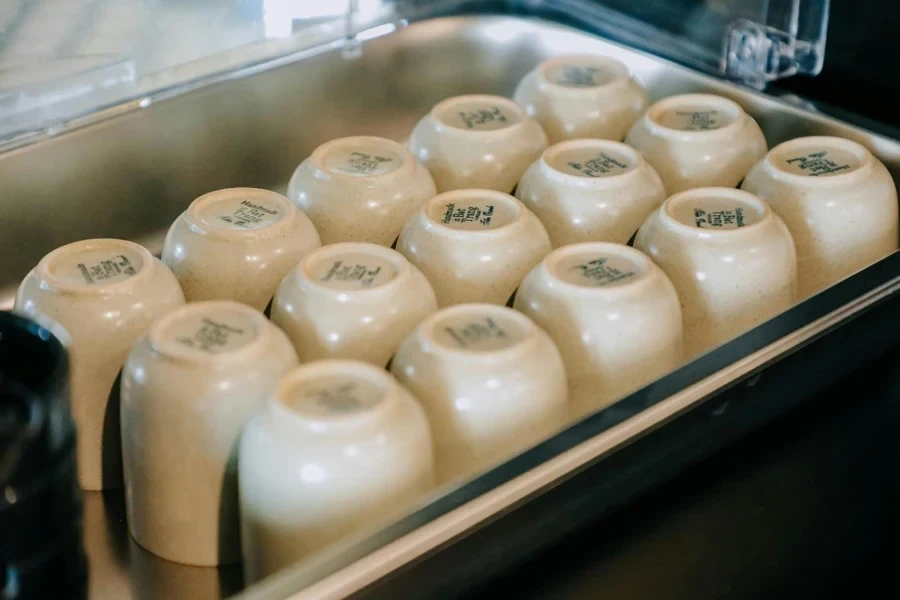Storage trays have become indispensable for efficient organization across sectors, from culinary spaces to retail and professional offices. With the market projected to grow steadily, the variety of trays available today—from eco-friendly, multi-compartment options to high-tech, sensor-equipped designs—reflects evolving consumer and industry demands. Understanding current trends and innovative features can guide professional buyers toward solutions that optimize space and enhance functionality. Informed choices in tray materials and designs cater to specific needs while aligning with sustainability goals. This guide provides a comprehensive overview of these options, equipping businesses with insights for strategic, purpose-driven purchases.
Table of Contents
● Understanding the storage tray market
● Types of storage trays and their unique features
● Key factors to consider when choosing storage trays
● Conclusion
Understanding the storage tray market

Market scale and projected growth
The storage tray market is positioned for steady expansion, with a projected growth from $12.8 billion in 2024 to $16.6 billion by 2034, driven by increasing demand for organized storage across multiple industries, including food, retail, and healthcare. According to Future Market Insights, this market expansion will proceed at a CAGR of 2.6% over the forecast period. Key regions, particularly India and China, are accelerating this growth, propelled by rising disposable incomes and a cultural shift toward organized storage solutions. India is expected to lead with a CAGR of 4.7%, followed by China at 3.7%, while the United States and Germany maintain moderate growth rates as mature markets adopt innovative designs to meet sustainability and safety standards.
Emerging materials and designs
The storage tray industry is transforming, with sustainable materials and innovative designs taking center stage in response to environmental issues gaining traction in society today. One notable trend is the increasing adoption of eco materials such as recycled plastics and even edible trays to address the rising environmental awareness among consumers. Multi-cavity trays are leading the way in the market, known for their effective space utilization and versatility, across food service and retail sectors, commanding a significant 69.4% market share. Additionally, smart trays equipped with food safety sensors are gaining traction, particularly within the food industry, where they offer real-time freshness monitoring—a feature aligning with consumer demands for food safety and freshness assurance. According to Future Market Insights, these innovations are setting a new standard for both functionality and sustainability in tray designs.
Types of storage trays and their unique features

Plastic storage trays: versatility and durability
Plastic storage trays stand out for their robust construction and high chemical resistance, typically made from polypropylene (PP) or high-density polyethylene (HDPE). These materials ensure that trays withstand varying temperatures, making them suitable for both cold and hot storage needs. Many designs feature reinforced edges and ribbed bases that increase load-bearing capacity, reducing the risk of bending or warping even when stacked. Some plastic trays incorporate textured non-slip surfaces or drainage channels that prevent liquids from pooling, enhancing their suitability for food and beverage storage. Additionally, options like UV-resistant coatings or flame-retardant additives make these trays ideal for both indoor and outdoor use, adapting to specific industry requirements.
Specialized trays for food and event services
In food and event services, trays are designed with specific compartmentalization and material rigidity to handle the demands of serving food in high-traffic environments. Compartment trays often have precision-molded separations for portion control, preventing cross-contamination between foods. Some food service trays are manufactured using high-impact ABS or melamine, known for their durability and scratch-resistant finishes, maintaining visual appeal despite frequent handling. For catering events, large round trays often come with temperature-retaining materials or liners that keep foods at optimal temperatures for extended periods, catering to high-end service demands. Additionally, many food service trays integrate spill-proof edges and reinforced bases that handle heavy loads without compromising stability, which is essential in fast-paced environments.
Multi-cavity trays for efficient space management

Multi-cavity trays offer precise organizational benefits with individual compartments molded to specific depths, widths, and shapes, often catering to the dimensional requirements of retail items such as cosmetics, electronics, or packaged foods. Many of these trays are crafted from materials with anti-static or conductive properties to protect sensitive items, such as electronic components. Advanced designs include locking mechanisms or lid-compatible features for secure stacking and transport. For food storage, multi-cavity trays are sometimes lined with food-safe, anti-microbial coatings, preventing bacterial growth and extending product shelf life. The structured, partitioned design of multi-cavity trays allows retailers and manufacturers to efficiently organize products without risk of shifting or damage during transit.
Eco-friendly and edible tray options
Eco-friendly and edible containers are made from materials like polylactic acid (PLA), seaweed, or other bioplastics that are completely biodegradable. PLA-based containers are produced from corn starch and can endure wear while being compostable when exposed to industrial composting conditions. Some containers also use fibrous reinforcements, like bamboo or rice husks, to enhance strength without sacrificing biodegradability. Trays that can be eaten are commonly created using seaweed extracts or starch-based materials. They are designed with moisture-barrier coatings to keep food fresh without affecting its taste or quality. These trays are designed to meet various needs, such as being heat resistant for use in microwaves or rigid enough to prevent spills while also meeting environmental and performance criteria.
High-tech trays with built-in sensors
High-tech trays with built-in freshness sensors use gas sensors, RFID tags, or Bluetooth-enabled temperature monitors to offer immediate insights into storage conditions. The gas sensors pick up on ethylene and other volatile organic compounds (VOCs) released by foods to help users effectively keep tabs on ripeness and spoilage levels. Moreover, these trays have integrated LED indicators that change color to notify users when the food hits a critical temperature or freshness limit. In transit, RFID tags on these trays can provide location tracking and environmental condition logs, ensuring consistent temperature control. Additionally, some trays utilize humidity-absorbing materials within the tray structure, maintaining optimal moisture levels to extend the freshness of produce or delicate foods in storage or delivery settings.
Key factors to consider when choosing storage trays

Material considerations: plastic, paper, or specialty options
Choosing the right material for storage trays is essential because each type has its advantages and is for particular uses. Plastic trays, made from materials like polypropylene (PP) or high-density polyethylene (HDPE), offer durability and resistance to moisture, making them perfect for storing items over extended periods. They work well in kitchens or warehouses where items are frequently moved or exposed to varying temperatures. In contrast, paper trays and paperboard trays are chosen as affordable options for lightweight or one-time use scenarios like catering; however, they may not hold up well in wet environments and are more suitable for temporary or indoor usage. Specialized trays crafted from materials such as ABS or bioplastics provide many advantages, like impact resistance or eco-friendliness, to meet the needs of sectors that demand strength and ecological responsibility.
Size, shape, and compartmentalization needs
Proper sizing and compartmentalization are essential for maximizing storage efficiency and organization. Trays should be selected based on specific dimensional requirements for the storage area and the items they will hold. For example, multi-cavity trays with segmented compartments are ideal for keeping small items organized and preventing movement during transit. Stackable designs with reinforced bases and interlocking edges allow efficient vertical storage, saving space while ensuring stability. Additionally, trays with integrated handles or ergonomic shapes are valuable in mobile storage, enabling easy transportation between locations. Choosing trays with the right depth and width is especially important for industries with precise organization needs, such as retail, where product presentation is key, or food service, where containment and accessibility are prioritized.
Environmental impact and recyclability
Many businesses now consider sustainability when choosing trays by opting for eco-friendly materials that minimize environmental impact. They prefer compostable options, like those made from polylactic acid (PLA) or recycled plant fibers over traditional plastics. Recyclable trays made from materials such as PP or HDPE contribute to sustainability as they can be recycled back into raw materials when their lifecycle ends. Businesses aiming to minimize waste can opt for trays that are free of mixed materials to simplify recycling processes effectively and align with sustainability objectives, mostly in sectors such as food service and retail, where disposable products are common and eco-friendly choices are gaining popularity.
Innovative features: smart trays and anti-tamper designs
Enhanced functionalities such as smart sensors and secure lids benefit industries where food safety and freshness are crucial. Incorporating trays with built-in sensors that track temperature, humidity, and gas levels allows for monitoring and instant data access to maintain ideal storage environments. These innovative trays prove advantageous for perishable items, enabling grocery stores and food delivery services to minimize waste by closely overseeing the freshness of their products. Anti-tamper mechanisms, like color-changing lids, provide extra security for items to tamper with or contaminate, like pharmaceutical products, pre-packaged meals, and high-end retail goods. These advanced features boost the safety of the items and elevate consumer trust by aligning with industry norms and regulatory requirements in the food and retail domains.
Conclusion

Storage containers provide solutions in various sectors as materials and technology advancements enhance their effectiveness in organizing and sustaining storage needs today. Optimal selection of a storage tray considering factors like the durability of plastics or eco-friendly options and those equipped with sensors is essential for achieving efficient and sustainable storage solutions. The evolving market trends and industry standards are met by businesses benefiting from these solutions that improve space management while prioritizing safety and objectives.



